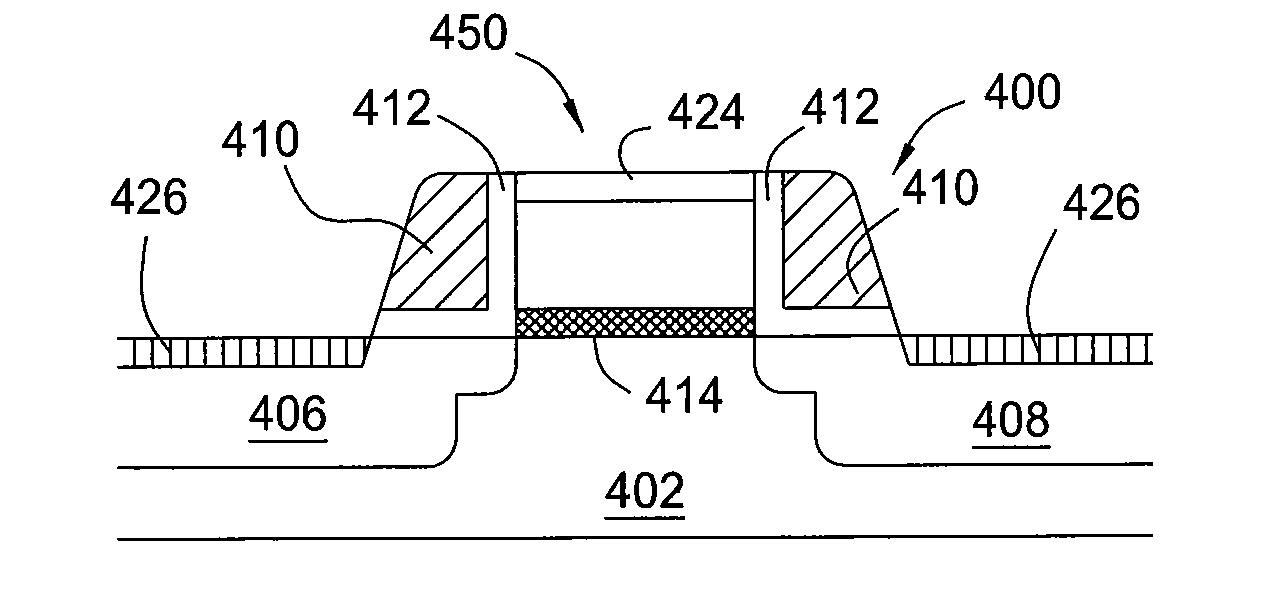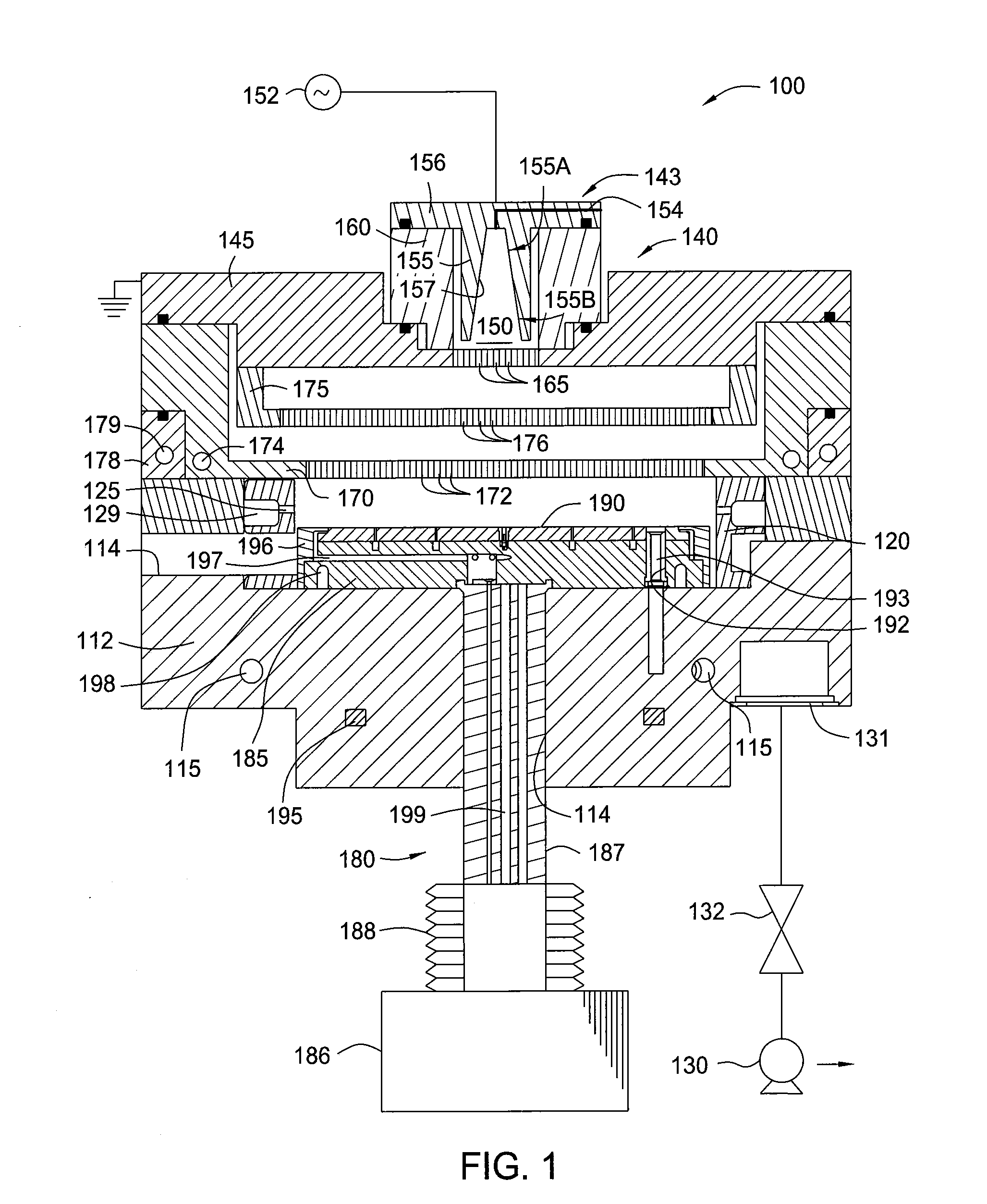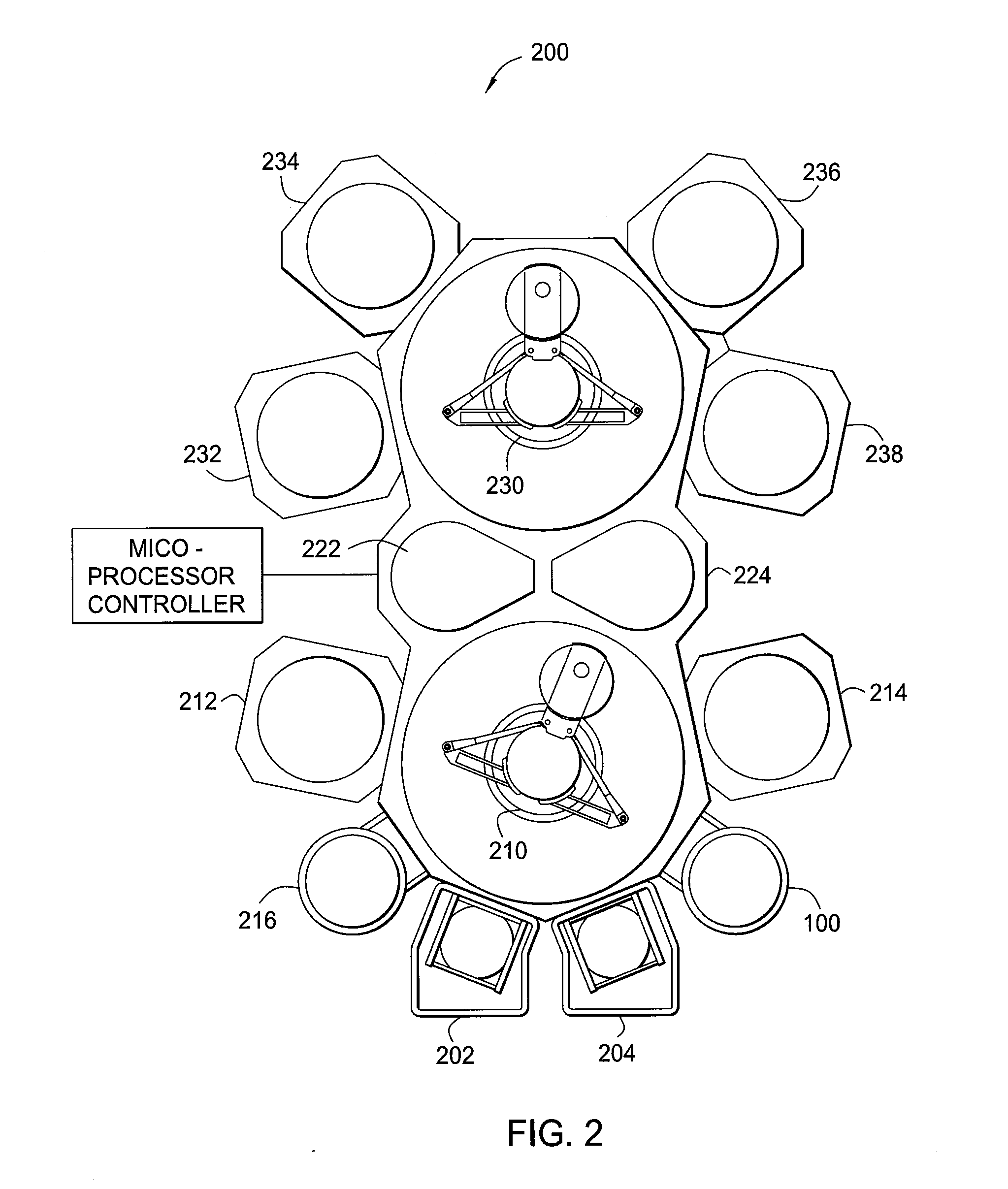Methods for precleaning a substrate prior to metal silicide fabrication process
a technology of metal silicide and substrate, which is applied in the direction of semiconductor/solid-state device manufacturing, basic electric elements, electric apparatus, etc., can solve the problems of poor adhesion, adversely affecting the nucleation ability of metal elements, and substrate subject to oxidative conditions
- Summary
- Abstract
- Description
- Claims
- Application Information
AI Technical Summary
Problems solved by technology
Method used
Image
Examples
Embodiment Construction
[0017]As will be explained in greater detail below, a substrate having a surface disposed thereon is treated to remove native oxides or other contaminants prior to forming a metal silicide layer thereon. The term “substrate” as used herein refers to a layer of material that serves as a basis for subsequent processing operations and includes a surface to be cleaned for forming a metal silicide layer thereon. For example, the substrate can include one or more conductive metals, such as aluminum, copper, tungsten, or combinations thereof. The substrate can also include one or more nonconductive materials, such as silicon, silicon oxide, doped silicon, germanium, gallium arsenide, glass, and sapphire. The substrate can also include dielectric materials such as silicon dioxide, organosilicates, and carbon doped silicon oxides. Further, the substrate can include any other materials such as metal nitrides and metal alloys, depending on the application. In one or more embodiments, the subst...
PUM
| Property | Measurement | Unit |
|---|---|---|
| diameter | aaaaa | aaaaa |
| diameter | aaaaa | aaaaa |
| pressure | aaaaa | aaaaa |
Abstract
Description
Claims
Application Information
 Login to View More
Login to View More - R&D
- Intellectual Property
- Life Sciences
- Materials
- Tech Scout
- Unparalleled Data Quality
- Higher Quality Content
- 60% Fewer Hallucinations
Browse by: Latest US Patents, China's latest patents, Technical Efficacy Thesaurus, Application Domain, Technology Topic, Popular Technical Reports.
© 2025 PatSnap. All rights reserved.Legal|Privacy policy|Modern Slavery Act Transparency Statement|Sitemap|About US| Contact US: help@patsnap.com



